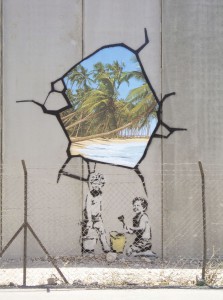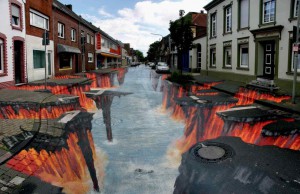Defining psychogeography by breaking it down into two parts: it’s the psychological and the geographical. Psychogeography was used by Situationist as a study of the specific effects of the geographical environment on the emotions and behaviour of individuals. They were creating a channel of communication between the city and it’s citizens to strive for a better habitat and to create an utopia.
We are all born into this world with a natural curiosity for our surroundings, and based on our early interactions and experiments we created our own interpretation of an Utopia. When we are thinking about our personal Utopian space, we are describing how different places, smells and colours make us feel and behave. We are transforming our desires into objects we like, materials we feel comfortable with, people we trust and streets we know.
There are many environmental factors like our surrounding people, possibilities, opportunities and social facilities that can influence our desires. This makes me question if we should pursue our desires unconsciously (surrealist) to keep them as honest as possible. Sometimes I feel that our real desires change as soon as we think about it and act like it. When we are not conscious, we are not able to change them. A big part of these influences are the many choices we have nowadays. The amount of choice is overpowering our true desire, which makes it hard to feel satisfied. This might be the reason why our desires are changing and transforming itself over and over again. Because of the many choices we have to tend to get lost in between purpose, desire and satisfaction.
"Tiger & Turtle - Magic Mountain" by Heike Mutter and Ulrich Genth
To let go of these desires and expectations for a little while we can do a “Dérive” through the city. This was introduced by Guy Debord in 1956. The concepts origins are in the Letterist International Collective based in Paris, where the dérive was a critical tool for understanding and developing the theory of psychogeography.
The dérive is an unplanned journey though a landscape (mostly Urban) where the participant is following a new logic that let’s them experience the landscape again, and that will force us to see what we would otherwise ignore.
Where a dérive in those times was all about exploring the streets and its environments, I think that a dérive nowadays has a lot more to offer: while we are having a moment of un-defined time in this “always-online” and time-focused world we are living in, the architectural spaces are inviting us to move. The choices we make are becoming an exercise of creating alternative ways of interpretation instead of passively following the traditional map. We are challenged to take courage and to get lost solely in order to find one’s way again.
- Hereby I recommend everyone to get lost every once in a while
- [x] [ This site is created by a psychogeographical collective, where they write (and photograph) their wanderings and mapping of the past, present and possible ]
- [x] [ This is a beautifully written portrait of a place, based on history and personal associations. ]
Adding the contemporary to the psychogeography:
Nowadays, digital mapping and mechanisms of exploring geographic environments by using mobile phones or pc’s have reached a high level of development and importance. You can find a traveling guideline for the most simple things as well as very detailed environments from all over the world. This way current knowledge has transferred the concept of impossible into possible. ( there even exists an application called “derive“ that is helping you to get lost…….. ) It reminds me of the interpretation given by Situationist for the absence of utopia: “No utopia can no longer be available because the conditions to become reality already exists” Yet do these things only exist to maintain the current state of things and not to serve the needs for quality life.
This knowledge and technology has created the development of Urban Interactive Installations and happening of interactive challenge. This whole new way of investigating and the human involvement in geographical environment has developed into another way of using psychogeography, where artists started to work by the theory of the Situationist and tried to approach the dynamics of human presence and behavior. In fact, in many cases the artists who use the terms of dérive and psychogeography are not practically associating their work with the impression of these concepts, as originally interpreted.
- Examples of Interactive installations:
- [x] [ 14 interactive installations in NYC ]
- [x] [ “Sway’d” – Interactive Public Art Installation in Salt Lake City ]
Also the Situationist have inspired many street artists, especially in term of content and composition . These artists are expressing their imagination on the wall by using the techniques of détournement and the construction of Situationist to create a whole new atmosphere in the city.
BANKSY - 2007 [above] • Edgar Mueller - Lava Burst
“The revolution in everyday life, breaking its present resistance to the historical (and to every kind of change), will create conditions in which the present dominates the past and the creative aspects of life always predominate over the repetitive ones. We must therefore expect that the side of everyday life expressed by the concepts of ambiguity (misunderstandings, compromises, misuses) will decline considerably in importance in favor of their opposites: conscious choices and gambles”.– GUY DEBORD May 1961
[x] Here you can read “the society of the spectacle” by Guy Debord. The book consists of 221 theses where he traces the development of a modern society in which authentic social life has been replaced with it’s representation.



